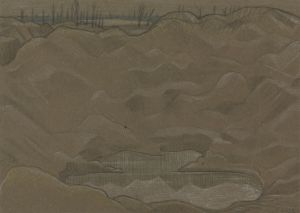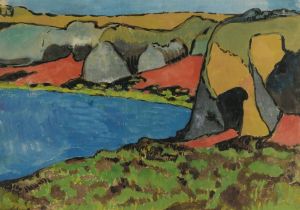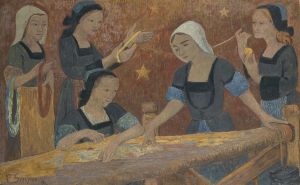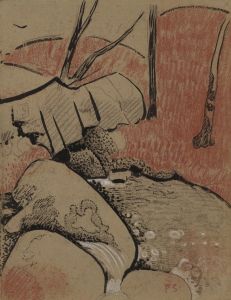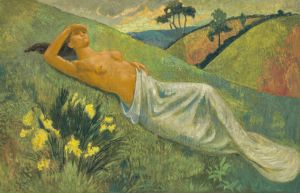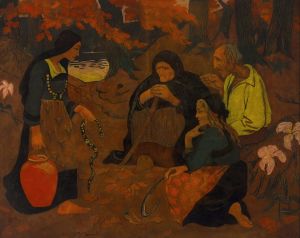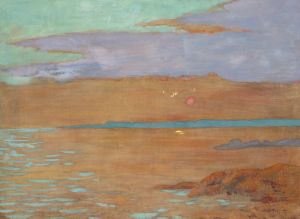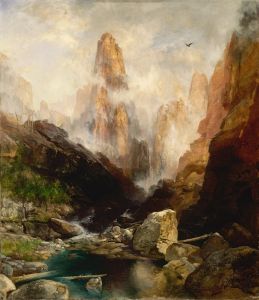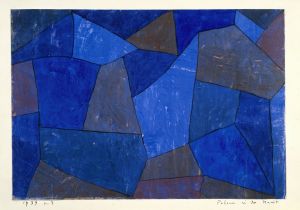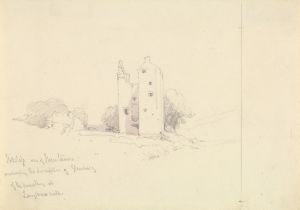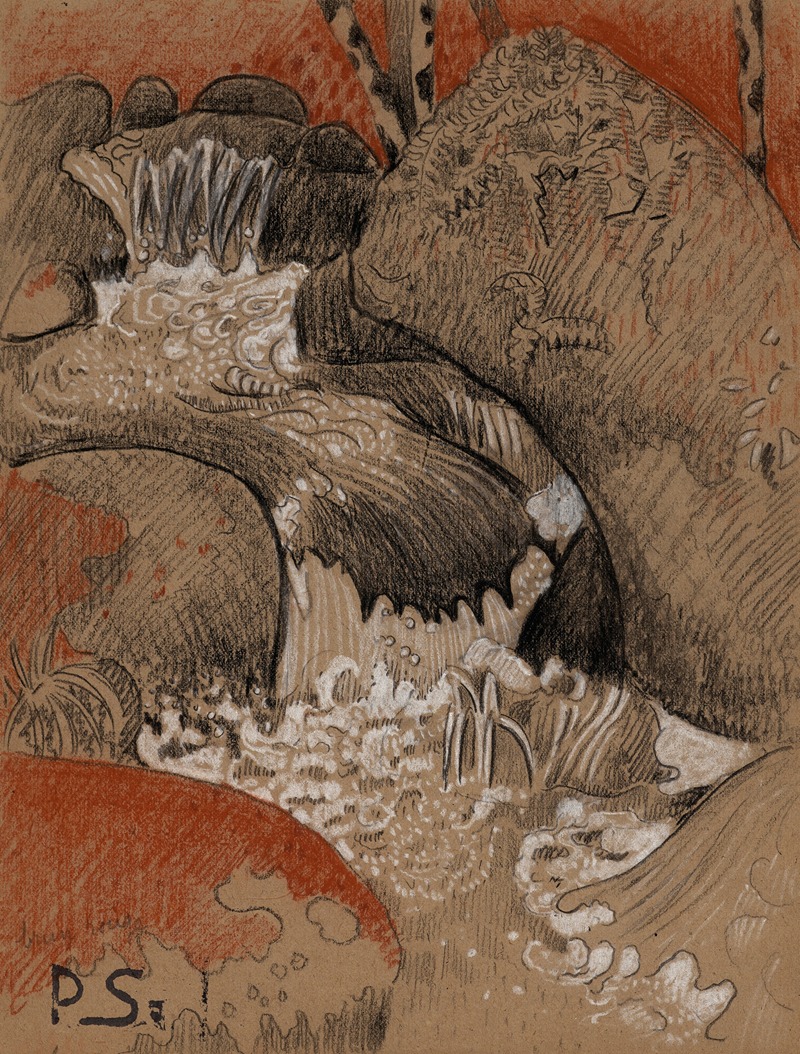
Rochers d’Huelgoat
A hand-painted replica of Paul Sérusier’s masterpiece Rochers d’Huelgoat, meticulously crafted by professional artists to capture the true essence of the original. Each piece is created with museum-quality canvas and rare mineral pigments, carefully painted by experienced artists with delicate brushstrokes and rich, layered colors to perfectly recreate the texture of the original artwork. Unlike machine-printed reproductions, this hand-painted version brings the painting to life, infused with the artist’s emotions and skill in every stroke. Whether for personal collection or home decoration, it instantly elevates the artistic atmosphere of any space.
"Rochers d’Huelgoat" is a painting by the French artist Paul Sérusier, created in 1905. Sérusier was a prominent figure in the Post-Impressionist movement and a key member of the Nabi group, which sought to synthesize symbolic and decorative elements in their art. The Nabis were influenced by Paul Gauguin and the Symbolist movement, and they aimed to transcend the naturalistic representation of subjects to convey deeper spiritual and emotional truths.
The painting "Rochers d’Huelgoat" depicts a rocky landscape in the Huelgoat forest, located in the Brittany region of France. This area is known for its mystical and picturesque scenery, which has inspired many artists and writers over the years. Sérusier's choice of this location reflects his interest in the natural beauty and the mythic qualities of the Breton landscape.
In "Rochers d’Huelgoat," Sérusier employs a vibrant color palette and bold, simplified forms to capture the essence of the scene. The rocks are rendered in a way that emphasizes their solidity and permanence, while the surrounding vegetation is depicted with fluid, rhythmic lines that suggest movement and life. This contrast between the static and the dynamic elements of the composition is a hallmark of Sérusier's style and reflects his interest in the interplay between nature and the human spirit.
Sérusier's technique in this painting is characterized by the use of flat, unmodulated areas of color, a method he adopted from Gauguin and the Japanese prints that were popular in Europe at the time. This approach creates a sense of harmony and unity within the composition, as the different elements of the landscape are woven together into a cohesive whole. The painting's decorative quality is further enhanced by Sérusier's use of patterns and textures, which add depth and richness to the surface of the canvas.
"Rochers d’Huelgoat" is an example of Sérusier's mature work, in which he successfully integrates the lessons of his early training with the innovative ideas of the Nabis. The painting demonstrates his ability to convey the spiritual and emotional dimensions of the natural world through a highly personal and expressive visual language. It also reflects his deep connection to the landscape of Brittany, which remained a constant source of inspiration throughout his career.
Paul Sérusier was born in Paris in 1864 and studied at the Académie Julian, where he was exposed to the avant-garde ideas that would shape his artistic development. In 1888, he traveled to Pont-Aven in Brittany, where he met Gauguin and became involved with the Symbolist movement. This encounter had a profound impact on Sérusier, leading him to adopt a more abstract and symbolic approach to painting.
Throughout his career, Sérusier remained committed to exploring the spiritual and emotional dimensions of art. He was a prolific painter, producing a wide range of works that include landscapes, portraits, and still lifes. His contributions to the Nabi movement and his innovative use of color and form have earned him a lasting place in the history of modern art.
"Rochers d’Huelgoat" is held in the collection of the Musée d'Orsay in Paris, where it is part of a larger collection of works by Sérusier and other members of the Nabi group. The painting continues to be admired for its bold use of color, its harmonious composition, and its ability to evoke the mystical qualities of the Breton landscape.





